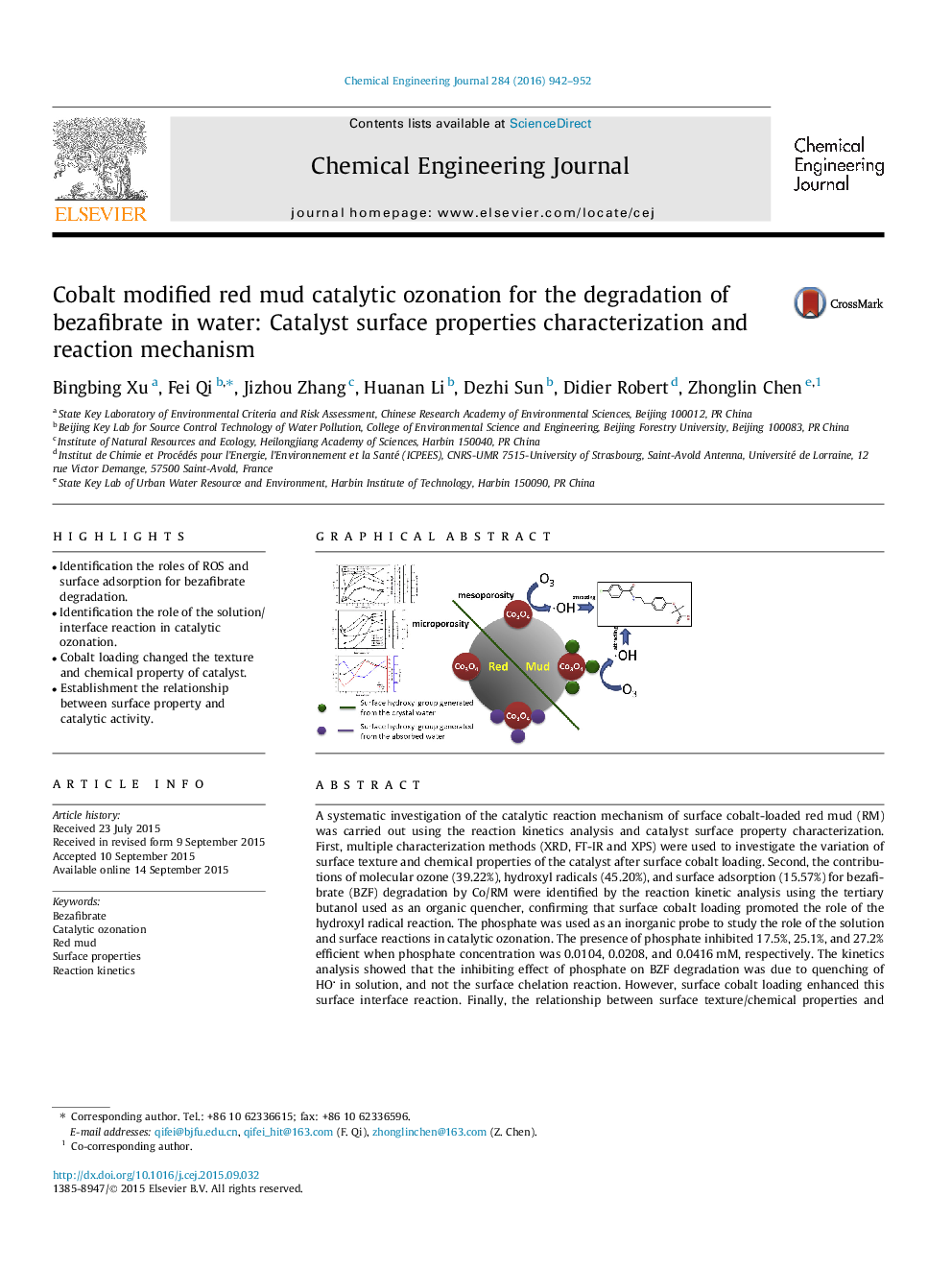| Article ID | Journal | Published Year | Pages | File Type |
|---|---|---|---|---|
| 146011 | Chemical Engineering Journal | 2016 | 11 Pages |
•Identification the roles of ROS and surface adsorption for bezafibrate degradation.•Identification the role of the solution/interface reaction in catalytic ozonation.•Cobalt loading changed the texture and chemical property of catalyst.•Establishment the relationship between surface property and catalytic activity.
A systematic investigation of the catalytic reaction mechanism of surface cobalt-loaded red mud (RM) was carried out using the reaction kinetics analysis and catalyst surface property characterization. First, multiple characterization methods (XRD, FT-IR and XPS) were used to investigate the variation of surface texture and chemical properties of the catalyst after surface cobalt loading. Second, the contributions of molecular ozone (39.22%), hydroxyl radicals (45.20%), and surface adsorption (15.57%) for bezafibrate (BZF) degradation by Co/RM were identified by the reaction kinetic analysis using the tertiary butanol used as an organic quencher, confirming that surface cobalt loading promoted the role of the hydroxyl radical reaction. The phosphate was used as an inorganic probe to study the role of the solution and surface reactions in catalytic ozonation. The presence of phosphate inhibited 17.5%, 25.1%, and 27.2% efficient when phosphate concentration was 0.0104, 0.0208, and 0.0416 mM, respectively. The kinetics analysis showed that the inhibiting effect of phosphate on BZF degradation was due to quenching of HO in solution, and not the surface chelation reaction. However, surface cobalt loading enhanced this surface interface reaction. Finally, the relationship between surface texture/chemical properties and catalytic activity was established, confirming that surface cobalt loading developed mesopores leading to an increase of the specific surface area. This was favorable for the catalytic activity. Co3O4 covered over the mesopore surface of RM and developed the surface hydroxyl group by the chemical water deduced from the cobalt surface loading. This is the main catalytic reaction site.
Graphical abstractFigure optionsDownload full-size imageDownload as PowerPoint slide
